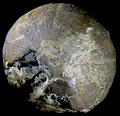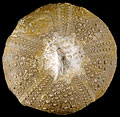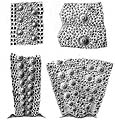The Echinoid Directory
Palaeopedina Lambert, 1900, p. 22
| Diagnostic Features |
|
|---|---|
| Distribution | Early Jurassic (Hettangian-Sinemurian), France. |
| Name gender | feminine |
| Type | Diadema globulus L. Agassiz, in Leymerie, 1838, by original designation. |
| Species Included |
|
| Classification and/or Status |
|
| Remarks |
|




